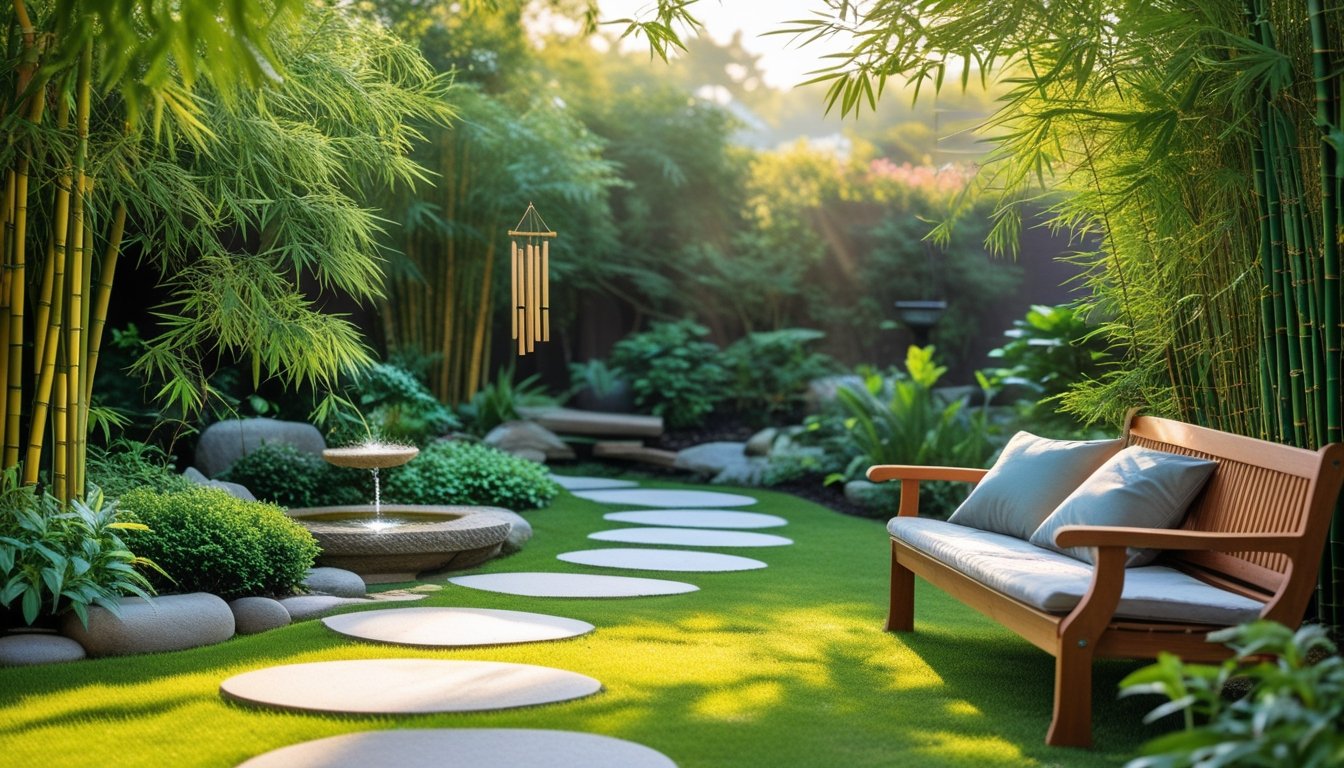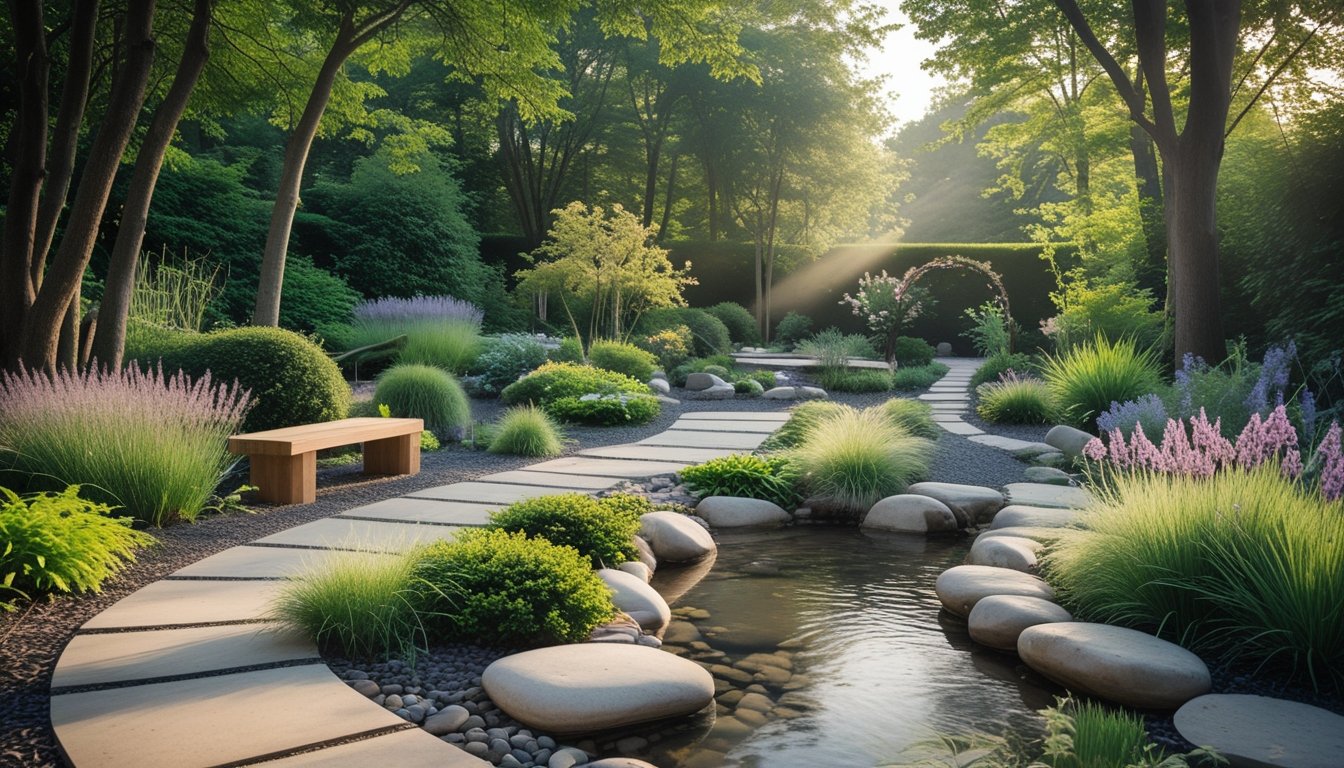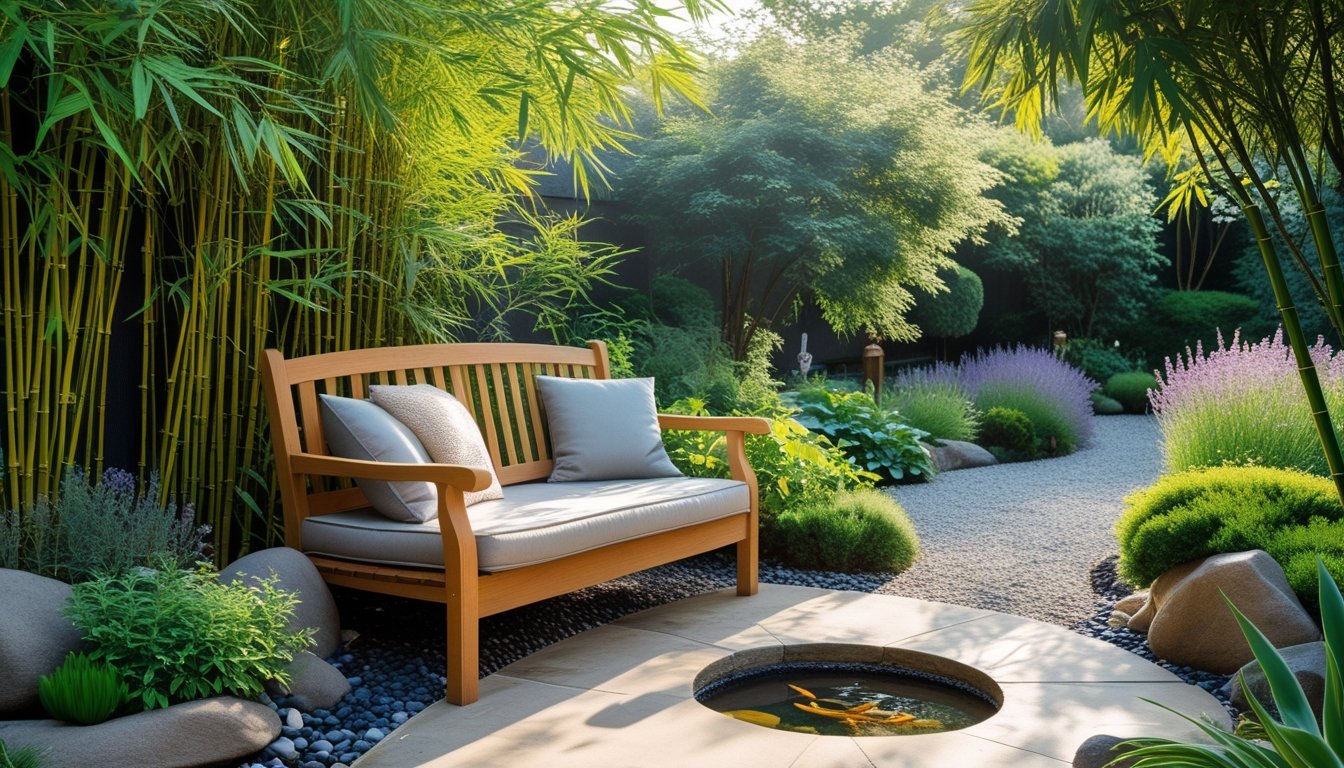Late updated: 31 Aug 2025 14:08
Written by: James Whitaker
Designing A Garden Space For Mindfulness And Relaxation: Creating A Serene Retreat
Creating a garden space for mindfulness and relaxation is an enriching endeavour that enhances our well-being. As we invite nature into our lives, we bridge the gap between the external and internal peace, crafting a sanctuary that resonates with tranquillity. Designing a garden with mindful intention allows us to cultivate a serene atmosphere essential for relaxation and reflection.

Integrating natural elements like soothing greenery and calming water features can significantly impact our mental state. It's not just about aesthetics; it's about fostering an environment that encourages us to pause, breathe, and recharge. Our gardens become personal havens, where each element contributes to a balanced and harmonious atmosphere.
In designing such spaces, we focus on simplicity and harmony, incorporating features that support mindfulness, such as comfortable seating or meditation zones. The blending of nature with mindful design principles transforms any garden—big or small—into a retreat where we can rejuvenate and reconnect with ourselves.
Key Takeaways
- Mindful garden design creates a relaxing personal sanctuary.
- Natural elements and simple designs enhance well-being.
- Combining nature with intentional design fosters tranquility.
Key Principles of Mindfulness Garden Design

In designing a mindfulness garden, we focus on creating spaces that foster relaxation, facilitate a deep connection with nature, and embody tranquillity. These elements are crucial for crafting a garden that serves as a sanctuary for mental well-being and peace.
Establishing a Purposeful Space for Relaxation
To create a garden conducive to mindful relaxation, we must first determine the purpose of the space. Relaxation areas benefit from incorporating features like comfortable seating and shade-giving structures. Whether it’s a hammock strategically positioned under an arbour or a bench nestled between flowering shrubs, choosing the right elements is key.
Water features, such as small fountains or ponds, introduce calming sounds, effectively masking external noise. This not only facilitates relaxation but also helps diminish stress levels. Adding soft lighting can also enhance evening tranquillity, making the garden usable at various times.
Promoting Connection with Nature and Mental Well-Being
Forging a connection with nature is not merely about aesthetics; it actively boosts our mental well-being. By selecting native plants that thrive in the local environment, we invite biodiversity into our garden, supporting local wildlife and organisms. Careful plant selection allows us to prioritise species known for their soothing qualities, such as lavender, which can promote calm with its scent.
We should think about sensory engagement. Herb gardens or plants like jasmine and mint that release fragrance can enrich the sensory experience. Since gardens are dynamic, regularly tending and interacting with them can provide mindfulness benefits, offering an enjoyable escape from daily pressures.
The Simplicity Principle: Minimalism and Tranquillity
Minimalism is a guiding principle for achieving tranquillity in garden design. By focusing on a few key elements, we avoid overwhelming the senses and instead create a peaceful retreat. Clean lines and uncluttered spaces help to soothe the mind, making it easier to engage in mindfulness practice.
We should limit non-essential features to maintain an airy, open feel. Colours and textures should harmonise—neutral palettes can extend a sense of space, while varied leaf shapes and textures keep visual interest. Stones or gravel paths can define walkways without clutter, allowing us to navigate the garden easily while absorbing its calming atmosphere.
Essential Elements and Features for a Mindful Garden
Creating a mindful garden involves integrating sensory elements, water features, and thoughtful pathways. These components work together to foster tranquillity, reflection, and connection with nature.
Sensory Elements and Fragrant Plant Selections
In a mindful garden, sensory elements are crucial for enriching the experience. Fragrant plants such as lavender, rosemary, and sage not only add aroma but also help lower stress levels. Incorporating jasmine and fragrant herbs can further enhance the garden's soothing atmosphere.
The choice of plants should include native species to ensure they thrive in the local climate with minimal care. Ferns and evergreens provide year-round greenery and texture. The natural beauty and aroma from these plants create an inviting environment for mindfulness practices.
Rough or textured leaves stimulate the tactile senses. This allows us to connect with the garden on multiple sensory levels, creating a deeply immersive experience. In essence, a variety of plants can transform the space into an oasis of tranquillity.
Incorporating Water Features and Calming Sounds
Water features such as ponds and water fountains infuse a calming sound, essential for a mindful garden. The gentle trickling of water acts as a natural white noise, blocking out distracting sounds. Adding a small zen garden or a lotus pond can also provide focal points for meditation.
Bamboo is another excellent addition next to water features, as its rustling leaves contribute to the auditory experience. Wind chimes and birdsong further enrich the soundscape, encouraging moments of stillness.
Material choice for these features should blend seamlessly with the garden setting, using elements like natural stone. These design elements not only enhance the aesthetic appeal but also deepen our connection with nature.
Designing Inviting Pathways and Meditation Corners
Paths and meditation spaces need careful planning and design to ensure functionality and beauty. Stone paths or small trails of gravel provide both tactile feedback and visual guidance. These pathways invite us to explore and wander, enhancing the meditative journey.
A dedicated meditation space can be outlined with natural stone or subtle markings in the landscape. Lotus flowers or other calming decor can add to the peacefulness of these areas.
By creating spaces designed for mindful reflection, pathways and meditation corners become integral parts of the garden. They invite us to pause, sit, and engage with the environment, fostering moments of peace and introspection.
Frequently Asked Questions

Designing a garden space to encourage mindfulness and relaxation involves a thoughtful selection of design elements, plant choices, and layout principles. By carefully considering how each aspect contributes to tranquillity and reflection, a meditative garden can be crafted to suit spaces of any size.
How can one design a small meditation garden to foster tranquillity?
Creating a calming environment in a limited space involves clever use of features like pathways and seating areas. Using vertical elements, such as trellises or climbing plants, can create the feeling of a more expansive area, while soft lighting can enhance the atmosphere without overwhelming the senses.
What are some essential elements to include in an outdoor meditation space?
Integral elements include water features, which add soothing sounds, and natural materials like wood and stone to ground the space. Additionally, seating that's comfortably integrated allows for extended meditation periods. Adding wind chimes or natural sound features can further nurture a sense of peace.
What design principles should be considered when creating a backyard meditation area?
Simplicity is key in a meditation garden, emphasising clean lines and uncluttered spaces. Natural flow, achieved through curving paths and gentle transitions between areas, enhances mindfulness. Symmetry may also be used to promote balance and harmony throughout the garden.
Can you provide guidance on the features to include in a spiritual garden for reflection?
Spiritual gardens often benefit from features that encourage introspection, such as quiet alcoves or secluded seating. Incorporating symbols or objects with personal spiritual significance can enrich the reflective experience. Thoughtful lighting and natural sounds also support a meditative atmosphere.
How can a meditation garden be tailored to suit small spaces?
In small gardens, emphasising vertical growth and multi-purpose features is essential. Using raised beds or layered planting helps maximise space, while elements like foldable furniture offer flexibility. Large mirrors can be strategically placed to create an illusion of increased size.
What are the best plant choices for cultivating a serene meditation garden atmosphere?
Plants chosen for their calming properties, such as lavender or jasmine, provide sensory benefits. Foliage with varying textures can add interest without overstimulating the senses. Evergreens offer year-round tranquillity, while seasonal blooms add changing focal points to keep the garden dynamic yet peaceful.
